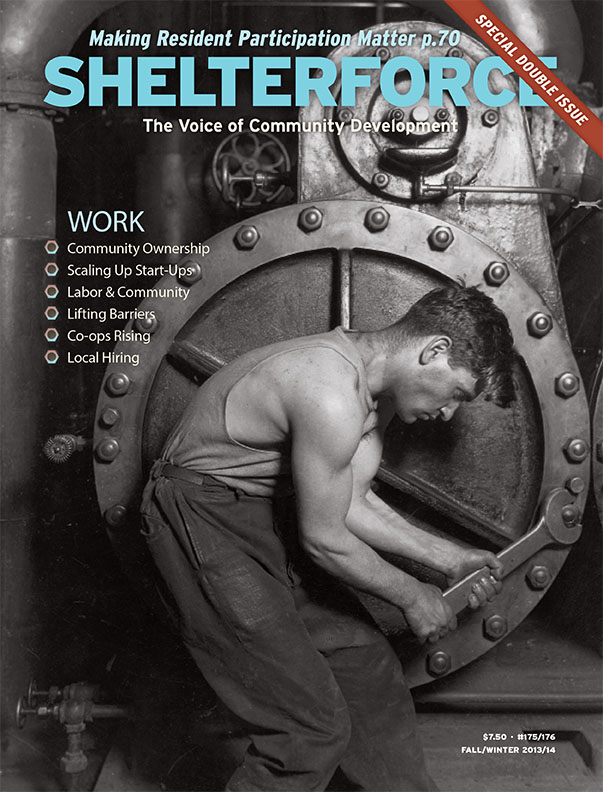In Lawrence, MA, a group of residents had what should have been a simple request: that the city improve its trash collection in their neighborhoods. That need led to a journey of empowerment for them and accountability for the city’s leaders.
These residents learned that their city’s budgeting process had no place for their participation. At best, they could see the budget when it was done and maybe comment. The document itself was technical and difficult to understand, and the distribution of funds was not based on a vision of the city’s future, a description of its goals or an assessment of its needs. But this was their money, these residents said, and how it was spent surely affects their future.
So a group of Lawrence residents took action. Alma Couverthié and Marianna Leavy-Sperounis tell a story that includes research, organizing, communication and political engagement; the hallmarks of every successful campaign. While they have not yet succeeded totally in creating a true participatory budgeting process in Lawrence, their wins are significant. They have gotten hundreds of people to take part in a learning process; they’ve created the first ever document that explains where Lawrence’s money comes from and how it’s spent, and they are holding their local bureaucrats and politicians accountable.
While participatory budgeting is not uncommon in many parts of the world, the movement is only beginning in North America. In Canada, Josh Lerner describes two different approaches; one by citizens of the city of Guelph and the other by residents of public housing in Toronto. In Chicago, the Neighborhood Capital Budget Group has been helping organizations understand that city’s budgeting processes for 18 years. Jacqueline Leavy, NCBG’s executive director, describes the key role research plays in providing community groups with the tools to organize for the equitable distribution of city resources.
Wherever citizens engage in a budgeting process, they are also learning to plan for the future. In many places CDCs are now moving beyond planning for their institutional growth or for their next project by working with residents and other community actors to develop comprehensive plans for their neighborhoods. David Holtzman describes how some CDCs are discovering both the challenges of neighborhood planning and the rewards. In all cases, community organizing and collaboration were vital to the creation of successful plans.
Collaboration and planning converged in New York City’s Chinatown after the September 11th tragedy. In the shadow of the World Trade Center, the economic life of that community – made up of many Asian cultural, ethnic and political interests – was at risk. Robert Weber shows us how Asian Americans for Equality and other organizations began an often-tense process that led to new resources coming into the area.
Words Matter
As I write this, the Senate, by a narrow vote, defeated a bill to completely eliminate the estate tax. Under current law, the threshold value of an estate before it is subject to federal taxation rises to $3.5 million in 2009. In 2010 the tax will be completely eliminated. But in 2011, the law sunsets and the tax returns to a $1 million threshold.
The current estate tax affects about 5,200 people with estates over $1.5 million, or fewer than one in 6,000 households (unless you’re in Congress, where the number is about one in six); in 2009 the tax will affect only 2,500 people.
The estate tax is considered by many as the most progressive tax in America, helping to reduce dynastic inheritances and encouraging charitable contributions. In these times of deficits and draconian cuts to social welfare spending, the repeal of this tax would cost from 600 billion to a trillion dollars over 10 years.
While this tax affects only the very wealthy, many Americans think of it as the “death” tax; an unfair burden on middle-class families who risk losing the ability to pass on their small businesses, farms, even homes and modest assets to their heirs.
Why is this?
Over the past decade, 18 of America’s richest families have spent about $200 million to support think tanks, media and other organizations to build this myth. They kept their eyes on their prize – billions of dollars of wealth. They developed “research” to feed the media. They organized special interest groups. They helped elect candidates who supported their interests. And one clear strategy was to reframe their message to get the widest possible buy-in by the general public.
Like the estate tax opponents, housers are now beginning to learn how to spin the message, as David Holtzman shows. By carefully using language, groups around the country are finding support for affordable housing programs and overcoming resistance that was often based on perception instead of reality.
But in North Carolina, former senator John Edwards is using a word that hasn’t been heard as loudly from a politician seeking national office in about four decades: poverty. John Atlas and Peter Dreier describe a recent conference where Edwards learned much about eliminating poverty in America. Now Edwards is asking: can a platform of ending poverty lead to the Oval Office?





Comments